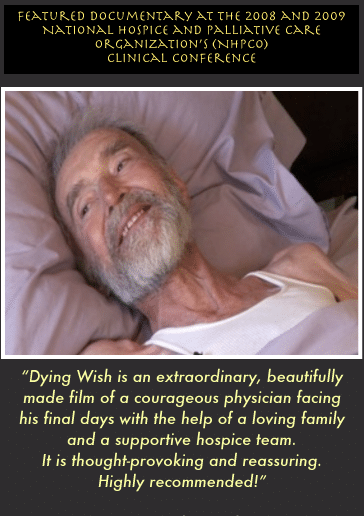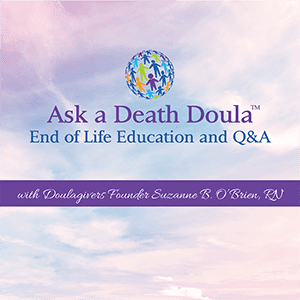
No Food For Thought
Oct 29, 2019
What is VSED?
VSED stands for voluntarily stopping eating and drinking. It is an intentional decision to stop drinking and eating, for the specific purpose of causing death. It does not refer to stopping food and fluids provided using a feeding tube or to situations in which a patient has no appetite or is unable to eat or drink due to illness or disease. Time until death depends on a patient’s underlying conditions and disease state but takes place within 5 to 21 days, with the median time of death occurring seven days after start. The cause of death is dehydration.
VSED VS Medical Aid in Dying.
VSED is different from medical aid in dying, which is legalized in few jurisdictions and carries legislative and regulatory hurdles. Because of the laws clarifying the status of medical aid in dying and the contrast of VSED to the definition of medical aid in dying, it remains obscure. Yet, an option for terminally ill patients. This is because there is no need to legalize VSED, as patients already have right to reject medical interventions. Therefore, VSED falls into a de facto area of legality. Also, since there is no authorizing statute for VSED, there are no legal restrictions against its use. The result is that, from a legal standpoint, patients have more access to VSED than to medical aid in dying services.
Although VSED involves halting intake of all food and fluids (except for comfort or taking medication), patients can make decisions. Therefore may start nourishment if they change their mind. Unlike other types of medically assisted death, there is plenty of data supporting that VSED is peaceful, painless, and dignified. Some people have even reported having a euphoric experience, characterized by pleasant lightheadedness. There is belief among researchers that dehydration can create an analgesic effect, which could explain this. Of course, other people may have other experiences as the organs in the body shut down, such as increased confusion, delirium, and heightened agitation. These symptoms are also typical during the dying process and can be managed or alleviated with medications.
VSED in the Media.
Regardless of which experience a patient has, the takeaway has been that if properly monitored, VSED enables a comfortable, “good quality” death. An example of this is found in the documentary Dying Wish, which follows the life of Dr. Michael Miller, a retired surgeon with cancer who decided to stop eating and drinking, so his life would not be prolonged, and to show others that the process was “gentle and natural.”
VSED in the Medical Community.
VSED is gaining among doctors and patients as a legitimate treatment for end-of-life suffering. In the past four years, VSED has been recognized by those in medical care. Although patients can accomplish VSED without medical professionals, it is discouraged. Clinician involvement is important for pre-intervention assessment, anticipatory guidance, medical treatment of symptoms, and emotional support.
Lawmakers and healthcare professionals have been working to clarify the legitimacy of VSED. Both national and international associations have published policy positions supporting VSED. For example, a 2017 position paper from the American
Nurses Association (ANA) on end-of-life care stated: “The acceptance or refusal of clinically appropriate food and fluids, whether delivered by oral or artificial means, must be respected, provided the decision is based on accurate information and represents patient preferences…. This is consistent with ANA’s values and goals of respect for autonomy, relief of suffering, and expert care at the end of life.”
In February 2018, the College of Physicians and Surgeons of British Columbia confirmed the legality of using VSED to hasten death in terminally ill patients. In a separate case, the Supreme Court of British Columbia held that “adults have a common law right to consent or refuse consent to personal care services including oral nutrition and hydration.” Because of shared common law principles and history, these Canadian decisions have persuasive force
in the United States. The Hawaii legislature expressly recognized the legality of VSED in April 2018.
VSED and the Law.
Even without approval, principles of healthcare decision making support the individual’s choice for VSED. The U.S. Supreme Court has also affirmed the right of a competent individual to refuse medical therapies, including food and fluids. People have the right to refuse life-sustaining treatments, and physicians and caregivers must honor this. Attempts to forcibly feed or non-consensually perform invasive procedures, such as placing a feeding tube in a patient, would be considered battery.
It is now a consensus that VSED is an ethical, legal, and legitimate option for terminally ill patients who are capable of making decisions. The remaining questions do not concern the use of VSED. Rather the use of VSED for patients who are incapacitated. Policymakers and members of advocacy organizations are facing challenges of whether doctors and caregivers should oblige the wishes of incapacitated patients. These are patients that left instructions for VSED by advance directive or whose healthcare proxies request VSED.
Source: The ASCO Post
How it works:
The exact process of dying from VSED is not the same for everyone. Despite being used to hasten death, the experience by VSED is natural. In the first days after starting VSED, individuals retain their energy for physical activity but soon become weak. Once they begin to feel weak, movement requires assistance to prevent falls or accidents. Weakness or dizziness occurs suddenly, which is why 24-hour support is needed once the individual begins the fast. Mental alertness is replaced by longer periods of sleeping.
In many cases individuals remain in a coma state during the final stages. In some cases, individuals have periods of alertness until death. The dehydration from VSED affects the body, and each organ system in the body begins to shut down.
As death nears, breathing becomes shallower and irregular. Moaning or “rattling” breathing occur. But, this is not an indication of distress. The body changes temperatures, and there is discoloration in the face (flush red, or pale with bluish or yellowish tones), and purple or bluish “mottling” in the hands or feet. Medications care is used to manage symptoms that arise for any discomfort.
Source: Compassion and Choices
What is the Death Doula Role in the VSED Process?
The key to utilizing VSED and having a peaceful experience is the pre-planned approach that is monitored with 24-hour support. Death Doulas, trained in the process assure the patient and loved ones what they experience is natural and offer on-site emotional support. Their knowledge in physical changes allows them to notify the doctor or hospice of developments that need attention, especially the relief of discomfort. The Death Doula will NOT administer medications but will be educated on medications and can walk the caregiver through administration and offer suggestions for patient comfort.
The Death Doula monitors the patient during VSED when other caregivers are not present. Thus, filling the gaps between visits. Or, when the primary caregiver needs rest. This does ensure that the patient is having the best experience possible. Therefore, all issues are addressed so that a peaceful and painless death is achieved.





